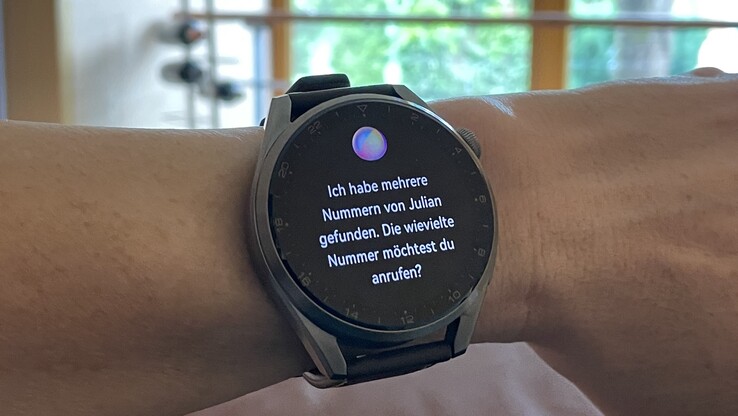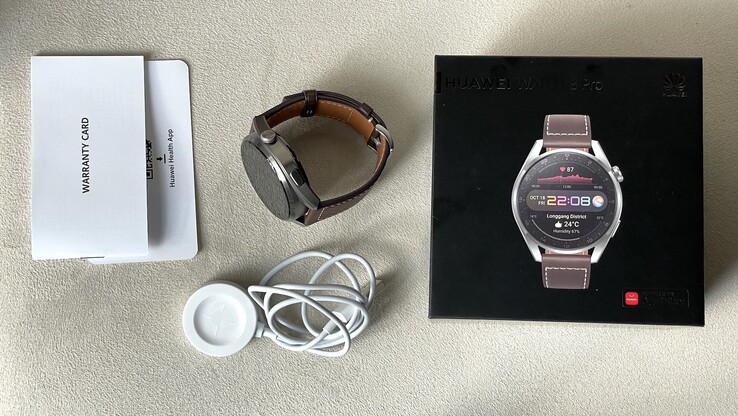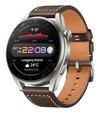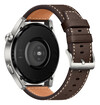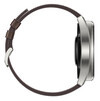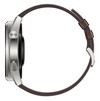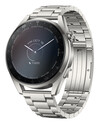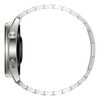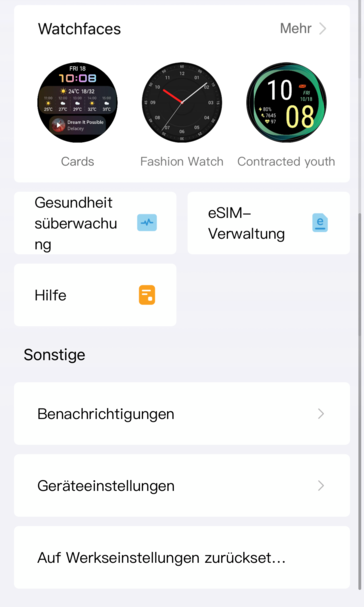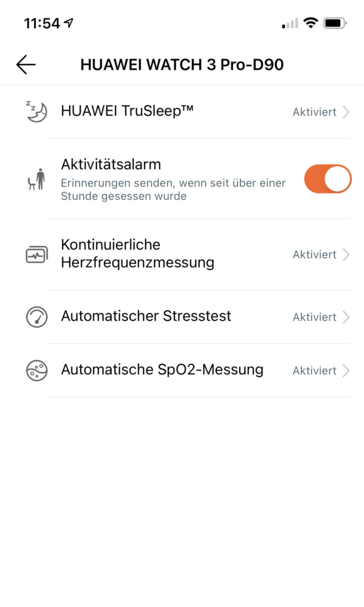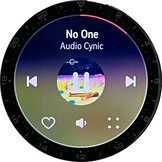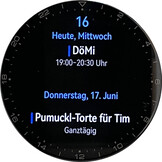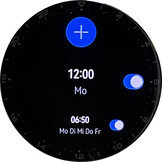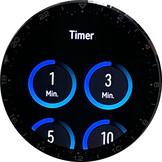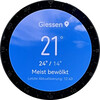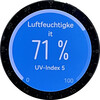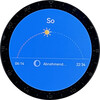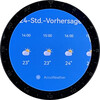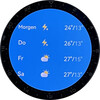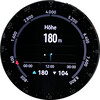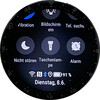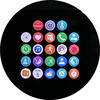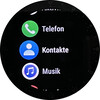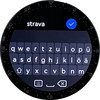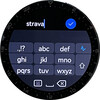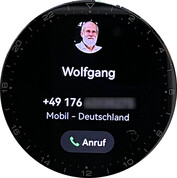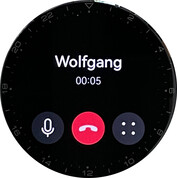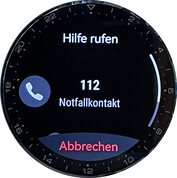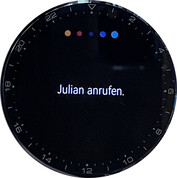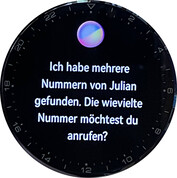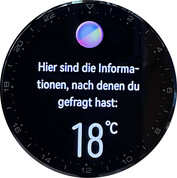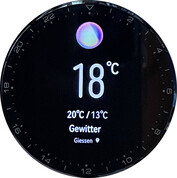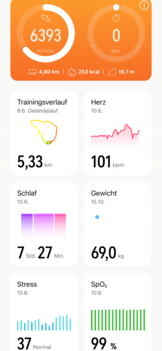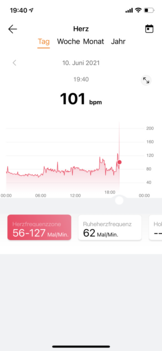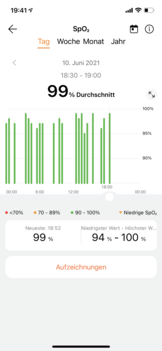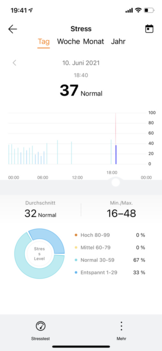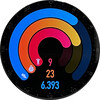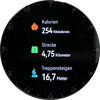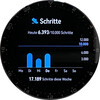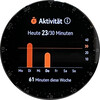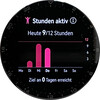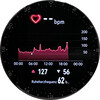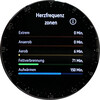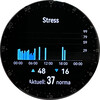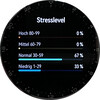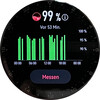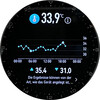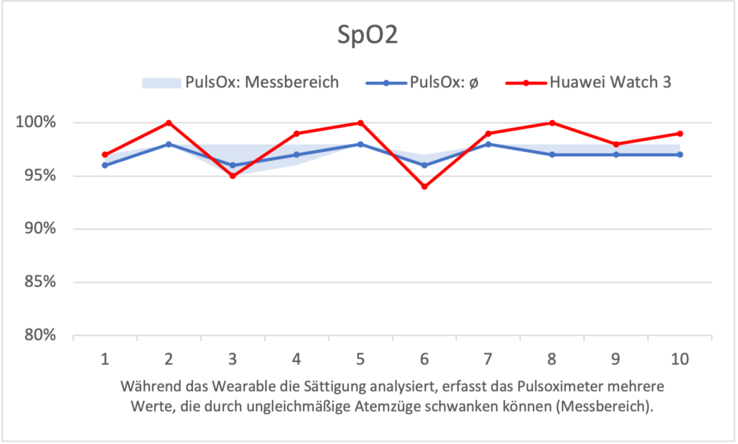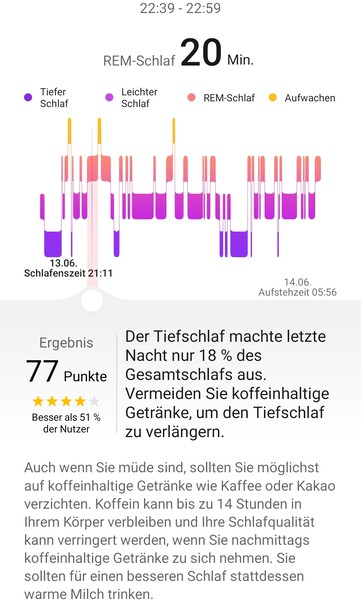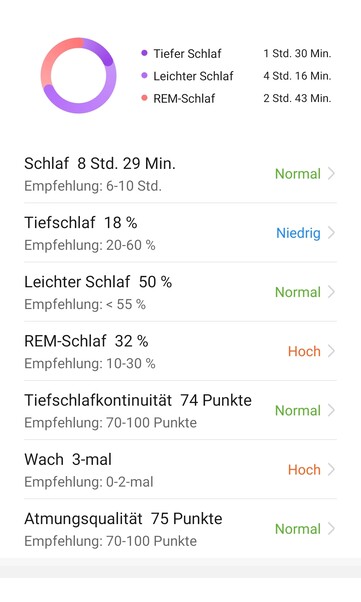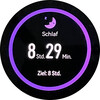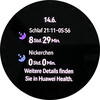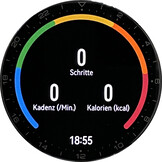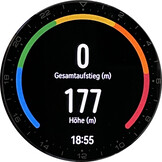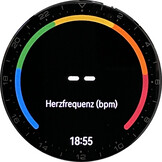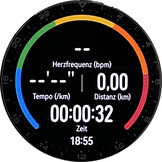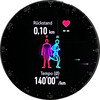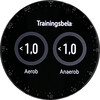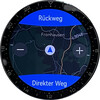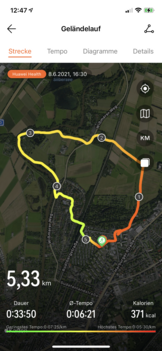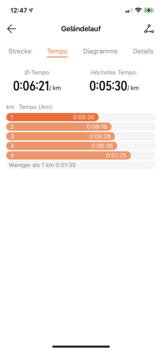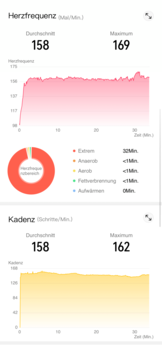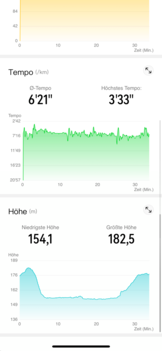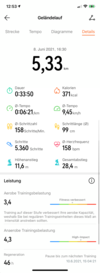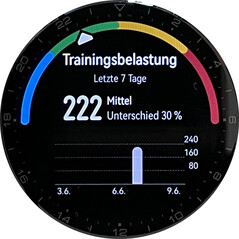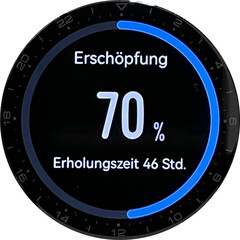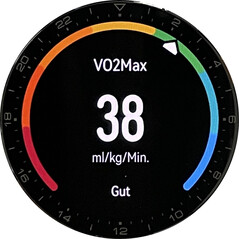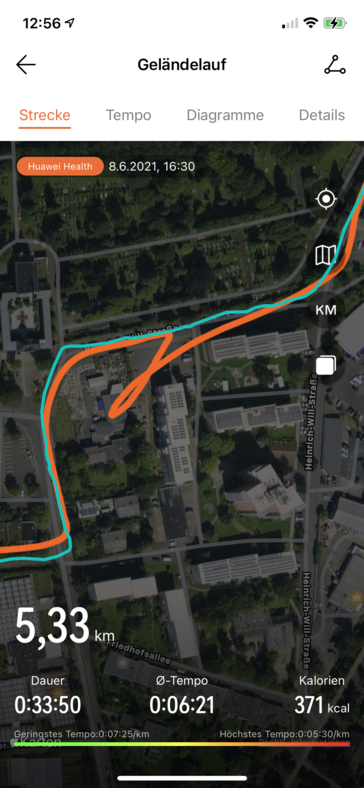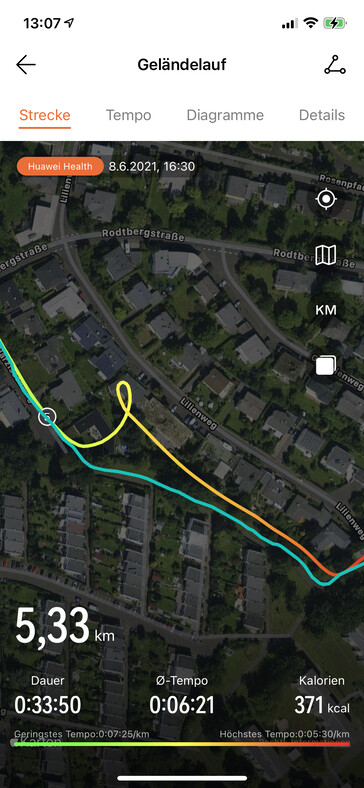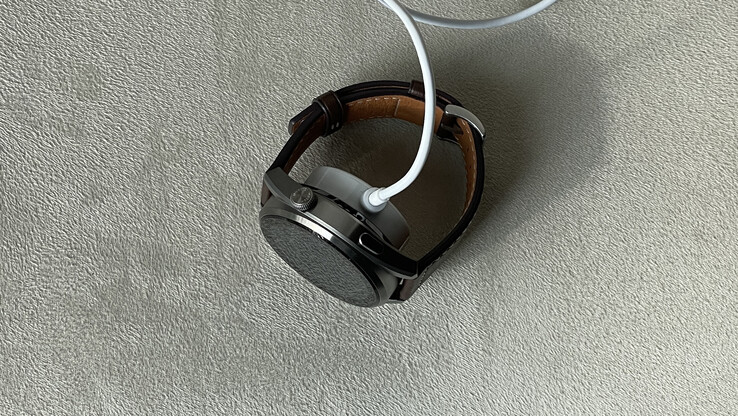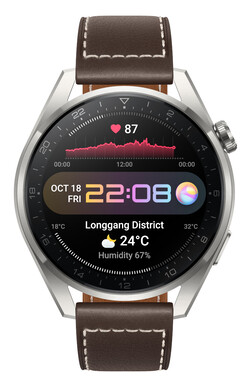Huawei Watch 3 Pro: The first smartwatch with Harmony OS in review
Case and features - First Huawei smartwatch with temperature sensor
Huawei offers the Watch 3 in two variants and provides them with different materials. The test device is the Huawei Watch 3 Pro Classic Edition. The high-quality titanium case with ceramic on the inside measures 45 mm x 49.6 mm x 14 mm (~1.77 x 1.95 x 0.55 in). The Watch 3 in stainless steel is smaller and minimally thinner with a diameter of 46.2 mm (~1.82 in) and a thickness of 12.15 mm (~0.48 in). The AMOLED has a diagonal of 1.43 inches on both and has the same resolution of 466 x 466 pixels.
The Watch 3 Pro's battery is stronger than the Watch 3's (450 mAh) with 790 mAh and lasts correspondingly longer: Huawei mentions 5days for the Smart modecompared to 3 for the Watch 3, and 21 days compared to 14 days for the "ultra-long battery life" mode. The Watch3 connects to the navigation satellite systems GPS, GLONASS, Galileo, and BeiDou, and the Watch 3 Pro additionally with QZSS.
Huawei relies on a dual-chipset architecture for both to be able to call up performance when needed and to require little energy in normal use. The main memory has a capacity of 2 GB, the data storage 16 GB. Like its predecessors, the latest Huawei Watch has speakers and a microphone. It is LTE-capable for the first time, and Huawei also integrates a voice assistant in its new operating system. Other hardware includes NFC, and Huawei adds a temperature sensor for health monitoring.
The Huawei watch is operated via the touchscreen and two lateral buttons. The upper of the two is rotatable as a crown and facilitates scrolling through menus and training protocols as well as setting alarms.
Setup and operation - Harmony OS with App Gallery
Huawei's new operating system Harmony OS 2.0 is installed on the Huawei Watch 3 Pro. However, the interface looks familiar. As with the predecessors, you need the Huawei Health app to set it up. For iOS, you simply download it from the App Store. On Android smartphones, it is easiest to install the Huawei App Gallery first and then use it to install the Health app.
In the Health app, you can activate the eSIM and Bluetooth disconnection detection, if you want, and configure the settings for health monitoring. It is also easier to select the watch face via the app. 30 watch faces are preloaded on the Watch, some with customizable complications. More can be downloaded from Huawei's Watch Face Store or created from a photo.
We tested the smartwatch alternately with a Honor View 20 and the iPhone 12 Pro. The iPhone does not support the download of paid watch faces, so the number there is reduced from about 1,000 at Android to just over 100. In addition, the music app only connects with Huawei's music streaming service Huawei Music at Android so far. When opening the app with the iPhone, the message "Huawei Music is currently not available with iOS" appeared - which at least gives hope for an update.
The preloaded tools include an alarm clock, stopwatch, compass, barometer and a voice recorder. Other apps can be downloaded via Huawei's app gallery. It will probably take a while until the App Gallery can compete with the stores of Apple and for WearOS. Huawei advertised the still sparse offer with the apps from kicker and Tagesschau, which includes the podcast "Die Tagesschau in 100 Sekunden". According to Huawei, the Watch supports mobile payments in combination with the Stocard app, which is also available in the store.
Furthermore, we found a shopping list, a translator, a couple of workout apps, and the game Infinity Loop among others in the app gallery, and it seemed to us that a few apps had already been added during the test period. By the way, the search for Strava, as seen on the screens below, was still unsuccessful during the test period, as was the search for Spotify. However, the music widget that appears during workouts can control the currently active music player on the smartphone; that can also be Spotify.
The Watch displays the app overview optionally as a list or grid. In the test, it often took several taps until the tapped app opened. The crown enlarges or reduces the grid, and it helps scrolling in the list view. The haptic feedback that the vibration motor generates when turning the crown can be disabled. The bottom button opens the training app in its factory state; alternatively, you can assign another app to it. Holding it down or swiping to the right on the screen opens Huawei's Celia assistant with information about the weather. Horizontal gestures in the other direction open 4 widgets from the health and activity area one after the other. A widget for Huawei Music was still missing in the test period.
Telephony and notifications
The Watch receives messages via the connected smartphone and, unlike its predecessors, also displays emojis under the new operating system. It does not show the corresponding app icon for all notifications, as can be seen in a WhatsApp message below. Incoming WhatsApp calls are also displayed.
Telephony via the integrated eSIM was possible via the multi-SIM-capable rates of 1&1, O2, Vodafone and Telekom at market launch. Users who do not install an eSIM profile can make calls via the connected smartphone, provided it is within range. A call can be initiated via the Contacts app or from the call list and can either be made via microphone and speaker or via a Bluetooth headset connected to the watch. This worked smoothly with the Huawei FreeBuds 4 but should work just as well with other headsets.
According to Huawei, the sensors detect a fall and initiate an emergency call independently. You can also initiate it manually by pressing the crown 5 times.
Voice assistant
A long press on the bottom button opens Huawei's voice assistant Celia. It also optionally responds to the voice command "Hey Celia"; the screen already had to be activated for this in the test.
Celia calls up the weather and takes over some tasks: For example, she sets the alarm clock, activates the flashlight, starts a call and translates texts into different languages. It did not answer questions about the American president or the European soccer championship during the test.
Health and fitness - workout status provides VO2max
The sensors of the Huawei Watch 3 Pro count the steps, determine the distance and the number of floors climbed based on the meters of altitude climbed. The optical pulse sensor measures the heart rate and blood oxygen saturation throughout the day if desired and determines the effects of stress based on the heart rate variability. Like the Fitbit Sense, the Huawei Watch 3 Pro also measures skin temperature. While Fitbit only measures it at night and only shows changes compared to previous nights, Huawei's fitness tracker measures it around the clock and plots the temperature on a continuous chart.
The charts can be viewed on the watch and in the dashboard of the Health app, which also shows the progress over time. On the iPhone, the Health app can be connected with Apple Health, and on Android with Google Fit.
Heart rate and blood oxygen saturation
We compare heart rate and oxygen saturation in ten measurements with a medically certified pulse oximeter. We did not notice any discrepancies. The Huawei tracker deviates by a maximum of 3 percentage points when measuring oxygen saturation, and the average deviation is 2 percentage points.
Huawei's TruSeen 4.5+ PPG sensor works well in everyday use and during workouts with low fluctuations. We also put the PPG sensors to the test during an interval workout with short-term changes. Huawei's optical heart rate monitor does not follow the rapid increase in heart rate as quickly as a chest strap with an electric heart rate monitor. That is not unusual and is more successful with sports watches like the Garmin Venu 2s. The fact that the Huawei sensor does not reach the heights here either is due to the fast changes. During a running workout, recording high heart rates was no problem for the Huawei sensor.
Sleep tracking
There was no power nap during the test period, but the fitness watch would record it according to Huawei. The app displays the course of the sleep phases and evaluates their share in the total sleep time as well as the nightly breathing rate. Heart rate and oxygen saturation are not included in the sleep log.
Training recording
Huawei's workout app offers more than 100 sports modes and an additional 13 running courses for beginners and advanced runners. The Watch automatically recognizes walking and running (indoors or outdoors) as well as training on the cross trainer and rowing machine and asks the user if he or she wants to start a workout. For walking, the request came after about 1 km (~0.62 miles). This first kilometer was also included in the total distance at the end, but was missing in the route recording, which only started from then on.
In the Running (outdoor) training mode, you can compete with a "smart companion" and either allow it to set a fixed pace or automatically set your previous best performance. During the workout, the Watch then keeps you informed about the lead or lag. The following Watch screens illustrate the training display during running with an activated smart companion.
The following smartphone screens show a log after a run. All diagrams can be enlarged and overlaid with other curves if the smartphone is turned to landscape format as in the penultimate screen.
GPS and navigation
In the test, the Huawei Watch 3 Pro found the position quickly when it was still connected to the smartphone at startup. The search for the GPS signal took considerably longer when the smartphone was not nearby at the start of the workout.
During an activity of the training app with route recording, you can use the back-to-start navigation familiar from the Huawei Watch GT 2 Pro. It is possible that Huawei will soon bring its navigation solution Petal Maps to the Watch. We found an "Offline Map Navigation" from a third-party provider in the store, but we did not test it.
To examine the GPS accuracy, we performed the above terrain run in parallel with a Garmin Venu 2s. The Huawei Watch manages almost 300 meters (~328 yards) more than the Venu 2s however, zooming into the map reveals a few swerves where Huawei's sports tracker adds a few meters due to short GPS drifts. The following screens show two of them. The blue line above shows the quite precise track of the Garmin watch.
After a firmware update, which should stabilize the GPS among other things, we repeated the test on the same track. The GPS drifts repeated, albeit at a different location.
Battery and runtime
The battery of the Watch 3 Pro has a capacity of 790 mAh. Huawei specifies a maximum runtime of 21 days for the energy-saving mode "Ultra Long Battery Life", which it can also achieve. In this mode, Huawei deactivates mobile data, Wi-Fi, and some apps like the App Gallery, among others. However, many things continue to run, such as health tracking via the PPG sensor and workout recording. The phone app is missing, but incoming calls can still be accepted and made via the Watch. With a remaining capacity of 5%, the battery still lasts for 6 hours in the standard mode, the "Smart Mode". The "Ultra Long Battery Life" mode extends the remaining runtime to 25 hours with limited functionality. Returning from energy-saving mode requires a restart.
In "Smart Mode," the battery lasts up to 5 days. As with other wearables, the runtime shortens significantly when you activate the always-on display. If you then also choose a live dial with a moving background, the battery capacity runs out even faster. In the test, the battery barely lasted longer than a day in such a scenario with active use with one hour of GPS use and a few short phone calls. In practice, it is therefore important to find a good compromise between runtime and using the comfort features.
Huawei offers two power-saving options in the watch's battery settings: One deactivates the always-on display and the other turns off the arm-raising gesture feature that activates the display. Over three days of usage was achieved during the test by turning on the Always-on-Display and switching off the arm-raising activation feature. Using the smartwatch in this manner was also more visually pleasing than if the display had been permanently on, as a colorful dial had already been selected for this case.
The Huawei Watch 3 Pro is charged via an inductive charging adapter. Unlike the Watch GT 2 Pro the adapter does not have a USB-C port, but is firmly connected to the cable for connecting to a standard USB port. Huawei states a comparatively long charging time of almost 3 hours. That matches our experience in the field test, where it took around 2 hours 50.
Pros
Cons
Verdict - Successful development
From the user's point of view, the Huawei Watch 3 Pro's handling and interface have hardly changed compared with its predecessors. However, the mobile connectivity is a big change. Users who do not need it because they usually have their smartphone with them anyway would certainly have liked to save a few Euros here; on the other hand, those who are undecided do not have to weigh up the surcharge and the functional added value like with the Apple Watch.
The Huawei Watch takes a big step forward with the App Gallery and the mobile module.
The other two innovations, the control of functions via Huawei's voice assistant Celia and the App Gallery, are also positive if you use a smartwatch intensively. The store does not have much to offer at the moment, and we can only hope that this will change in the foreseeable future; you can definitely find a few interesting apps.
We also see the battery life as positive. Since the energy-saving mode does not restrict the functionality much, the watch can be used for several days in this mode. Here, the Huawei Watch 3 Pro is also better than the Galaxy Watch 3. We are curious to see what this will look like in the future, since Samsung is also about to change its operating system from Tizen to Wear.
The fact that nothing about the Huawei Watch is really innovative, but Huawei rather implements concepts that have been known for a long time, especially from Apple, is not reprehensible, but of course fuels the discussions between the fans. One drawback of the review sample was the sometimes sluggish response. If you first have to tap an app several times to open it, and this is repeated several times, it spoils the fun of the wearable. Huawei still has to improve that.
Price and availability
The RRP for the test device (Huawei Watch 3 Pro Classic Titanium Gray 49mm, Brown Leather Strap) is 499 Euros (~$593). Huawei included the FreeBuds Pro for free until the end of the test. The same price advantage also applied for the purchase at Amazon (DE). The cheapest current model is the Watch 3 Active Black in 46 mm with fluoroelastomer strap at 369 Euros (~$438).




